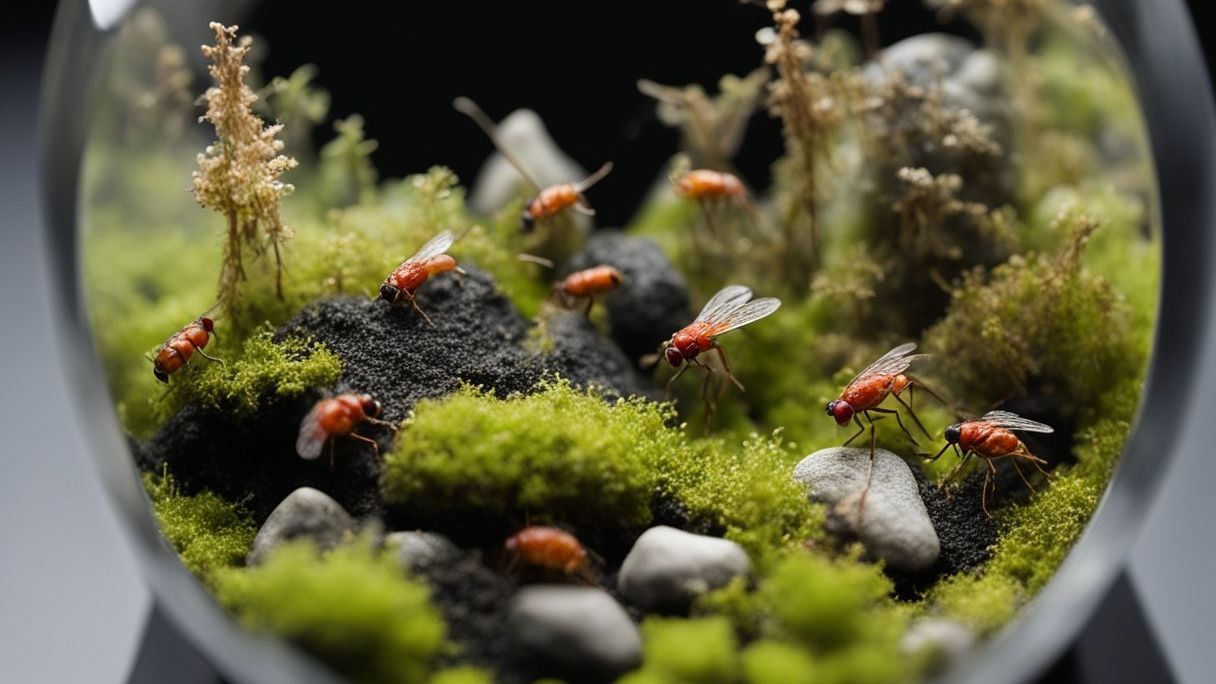Real-Time Analysis of Drosophia Feeding Behaivior.

Overview
Project: Real-Time Analysis of Drosophila Feeding Behavior
Client: Prestigious Academic Research Institution
Industry: Genetic Research
Technologies Used: Custom Experimental Hardware, Advanced Software Development, High-Resolution Data Visualization, Automated Feeding Assay
1. Background
In genetic research, understanding the nuances of Drosophila melanogaster feeding behavior is crucial. These tiny organisms are powerful models for unraveling genetic influences on behavior and physiology. However, traditional methods—relying on manual observation and basic assays—failed to capture the rapid and subtle dynamics of feeding, often resulting in time-consuming processes with limited precision.
Seeing this challenge, we set out to revolutionize how researchers study Drosophila feeding behavior. By collaborating closely with a leading genetic research facility, we aimed to develop an innovative experimental setup paired with advanced software capable of real-time, high-resolution analysis. Our goal was to create a transformative tool that would redefine genetic behavioral studies.
2. Objectives
- Pioneering Experimental Design:
- Develop a state-of-the-art experimental setup for real-time monitoring of Drosophila feeding with nanoliter precision.
- Innovative Software Solutions:
- Create advanced software for visualization, annotation, and in-depth analysis of feeding behavior data.
- Incorporate automated data capture and processing to enhance efficiency and accuracy.
- Strategic Collaboration and Recognition:
- Partner with a top-tier research lab to combine technical expertise with scientific excellence.
- Achieve recognition through high-impact scientific publication, showcasing the significance of our collaborative project.
- Driving Scientific Advancement:
- Propel the field of Drosophila research by providing tools that enable discoveries.
- Enhance researchers' ability to study complex behaviors in real time, opening doors to novel insights.
3. Solution
Our comprehensive approach combined cutting-edge engineering with sophisticated software development:
1. Revolutionary Experimental Setup
- Design and Development of the Expresso System:
- Engineered an automated, high-resolution feeding assay capable of measuring individual meal bouts in real time with nanoliter accuracy.
2. Cutting-Edge Software Development
- Advanced Data Visualization and Analysis Tools:
- Developed software offering real-time visualization of feeding behavior, providing immediate insights into ingestion patterns.
- Included features for easy annotation and customization, allowing researchers to tailor analyses to their specific needs.
- Automated Data Processing:
- Implemented algorithms to automatically detect and quantify feeding events, reducing potential human error and significantly speeding up data analysis.
- Enabled complex data interpretations, such as correlating feeding behavior with hunger states and sucrose concentrations.
3. Strategic Collaboration and Publication
- Deep Partnership with Leading Researchers:
- Collaborated closely with scientists to refine the system based on real-world use and feedback.
- Provided ongoing support and updates, keeping the tools at the forefront of technological capability.
- Achieving High-Profile Recognition:
- Contributed to groundbreaking research that uncovered the neural circuits regulating ingestion.
- Co-authored a publication in Cell, one of the most prestigious journals in the scientific community, highlighting the impact of our collaborative efforts.
4. Challenges
- Precision Engineering at Micro Scales:
- Designing hardware capable of detecting and measuring nanoliter volumes required overcoming significant engineering hurdles.
- Ensured the system maintained accuracy and reliability despite the challenges of working at such a small scale.
- Ensuring Data Integrity and Accuracy:
- Validating the software's ability to accurately capture feeding events was critical.
- Conducted extensive testing against manual observations to confirm the system's precision.
- Seamless Integration into Research Environments:
- Needed to ensure that the new tools complemented existing workflows without causing disruptions.
- Prioritized user experience to facilitate rapid adoption by researchers with varying levels of technical expertise.
- Managing Complex Data Sets:
- The high-resolution data generated required sophisticated methods for storage, retrieval, and analysis.
- Developed efficient data management strategies to handle large volumes of information without compromising performance.
5. Results
- Transformative Research Capabilities:
- Enabled researchers to observe and analyze feeding behavior with unprecedented detail and accuracy.
- Provided insights into how hunger and food quality influence ingestion, deepening the understanding of genetic and neural mechanisms.
- Significant Scientific Breakthroughs:
- The tools were instrumental in identifying specific neurons (IN1 interneurons) that integrate taste and hunger signals to regulate ingestion.
- Findings have broad implications, potentially informing research in other species and contexts.
- High-Impact Publication and Recognition:
- The collaborative research was published in Cell, demonstrating the high esteem of the work within the scientific community.
- Our team's contributions were acknowledged through co-authorship, solidifying our reputation as innovators in the field.
- Advancement of the Drosophila Research Field:
- The project set a new standard for behavioral analysis in genetic research.
- Opened avenues for future studies, leveraging the tools and methodologies we developed.
6. Lessons Learned
- The Power of Interdisciplinary Collaboration:
- Combining expertise from engineering, software development, and biology led to solutions none of the disciplines could have achieved alone.
- Regular communication and mutual respect were key to overcoming challenges and driving innovation.
- Importance of User Experience:
- A user-friendly design was crucial for adoption; researchers embraced the new technology when it integrated smoothly into their routines.
- Commitment to Excellence:
- Maintaining high standards in both hardware and software ensured the system's reliability and credibility.
- Rigorous testing and validation were essential, especially when the results had significant scientific implications.
- Scalability and Future-Proofing:
- Designing the system with flexibility allowed for easy updates and adaptations to emerging research needs.
- Anticipating future challenges ensured the tools' longevity and continued relevance.
7. Conclusion
Our collaboration resulted in a transformative platform that redefined real-time behavioral analysis in genetic research. By merging innovative engineering with advanced software solutions, we empowered researchers to delve deeper into the complexities of Drosophila feeding behavior than ever before. This project not only advanced scientific knowledge but also showcased our startup's ability to deliver cutting-edge solutions that drive meaningful progress.


